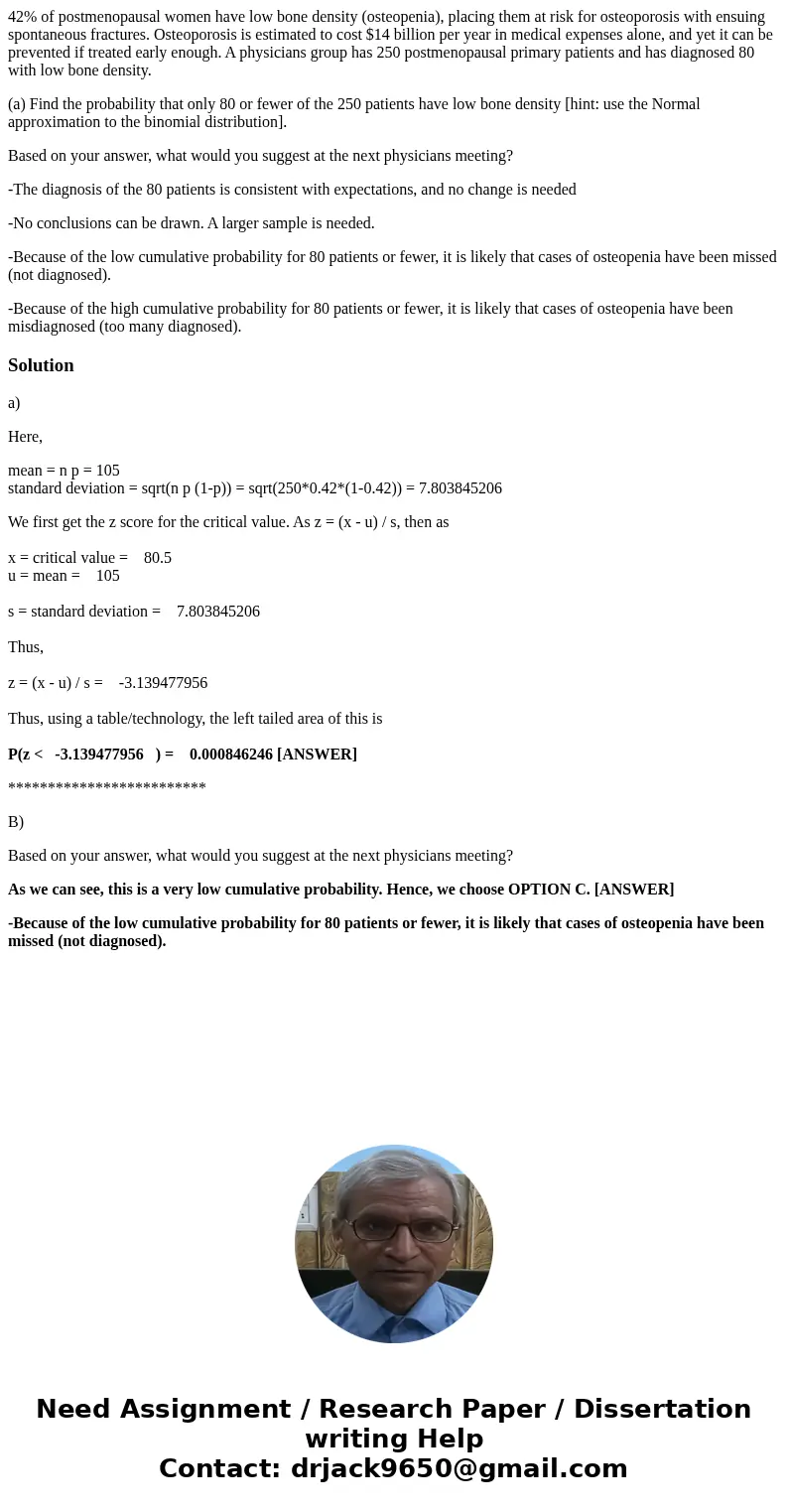42 of postmenopausal women have low bone density osteopenia
42% of postmenopausal women have low bone density (osteopenia), placing them at risk for osteoporosis with ensuing spontaneous fractures. Osteoporosis is estimated to cost $14 billion per year in medical expenses alone, and yet it can be prevented if treated early enough. A physicians group has 250 postmenopausal primary patients and has diagnosed 80 with low bone density.
(a) Find the probability that only 80 or fewer of the 250 patients have low bone density [hint: use the Normal approximation to the binomial distribution].
Based on your answer, what would you suggest at the next physicians meeting?
-The diagnosis of the 80 patients is consistent with expectations, and no change is needed
-No conclusions can be drawn. A larger sample is needed.
-Because of the low cumulative probability for 80 patients or fewer, it is likely that cases of osteopenia have been missed (not diagnosed).
-Because of the high cumulative probability for 80 patients or fewer, it is likely that cases of osteopenia have been misdiagnosed (too many diagnosed).
Solution
a)
Here,
mean = n p = 105
standard deviation = sqrt(n p (1-p)) = sqrt(250*0.42*(1-0.42)) = 7.803845206
We first get the z score for the critical value. As z = (x - u) / s, then as
x = critical value = 80.5
u = mean = 105
s = standard deviation = 7.803845206
Thus,
z = (x - u) / s = -3.139477956
Thus, using a table/technology, the left tailed area of this is
P(z < -3.139477956 ) = 0.000846246 [ANSWER]
*************************
B)
Based on your answer, what would you suggest at the next physicians meeting?
As we can see, this is a very low cumulative probability. Hence, we choose OPTION C. [ANSWER]
-Because of the low cumulative probability for 80 patients or fewer, it is likely that cases of osteopenia have been missed (not diagnosed).

 Homework Sourse
Homework Sourse